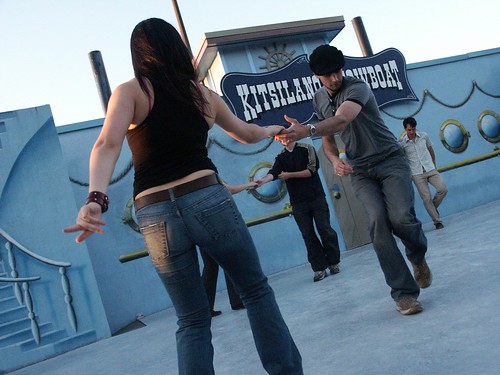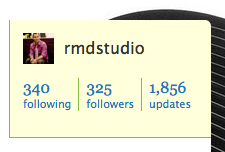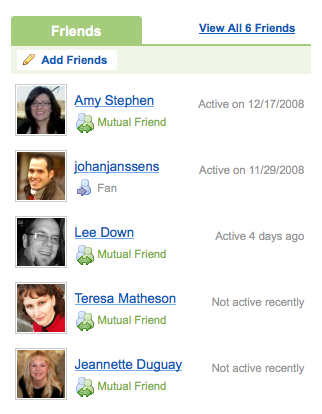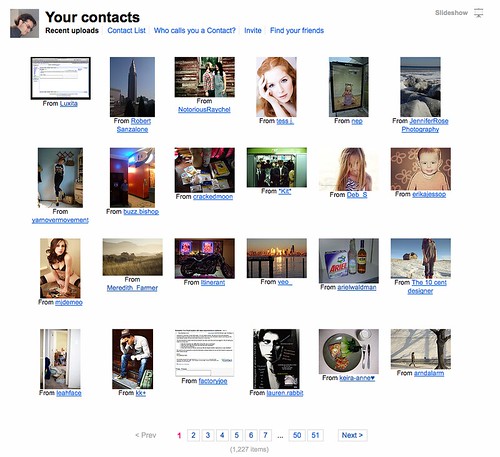Modern social networking applications use a Social Engine at the heart. Older Social Networking websites such as MySpace.com may not have such a clean cut architecture, however the core of the system sort of behaves more or less as a Social Engine does.
A Social Engine is in charge of managing people profiles, search, privacy, messaging, notification, requests, and most important of all Social Graphing.
Social Graphing is just a fancy technical name for the relationship among the people described as “Friends” or “Contacts”, in other words it is the “Network” in Social Network. It is the reason that people join such a websites so they can be perpetually in touch with each other and stay informed about each other’s activities.
Currently there are two models of social graph implementations in the existing social networking websites:
- The Lead, Follow, Mutual Model used in the more modern systems (Twitter and Digg) due to its more flexible and generic nature.
- The Enforced Mutual Friend model which is more stiff and specific. It was used in the earlier social networking websites and some of today’s websites such as Facebook are still stuck with it.
We are about to explain these models, and please keep in mind the best social graphing model is that one that is Most Flexible and Most Generic in the same time.
The Lead, Follow, Mutual Social Graph
In this model Jack initiates a link ( or graph ) to Jane, which means from that point Jack will be subscribing to Jane’s activities on a social network. Now Jane may or may not choose to initiate a link back to Jack. If she does, from that moment the are in a mutual relationship. That means they are both interested in each others online activities.
Here are some examples to better understand this concept:
- In a play ground Jack starts chasing Jane, then if Jane starts chasing back they are mutually interested in each other
- People subscribe to activities and publications of Barak Obama. Barak Obama may or may not subscribe back to his followers
- Project manager subscribes to the developers’ activities and receive constant project updates. Developers can subscribe back and receive updates from their project manager. In this example a Mutual relationship means collaboration.
Lead, Follow terms are borrowed from the social dance ( in Swing or Salsa one person leads and the other follows ) it is a tradition in the system analysis world to borrow terminologies used in Dance and Theatre. For example in the Online Learning Management Systems they use Play, Acts, Actors as generic names for Courses, Lessons, and Educators and Students as Actors.
Lead, Follow, Mutual terms are also generic template names which can be translated to the following terms depending on the context of a social network:
- Lead, Follow, Mutual
- Lead, Follow, Friend
- Idol, Fan, Friend
- Crush, Admirer, Dating
- Teacher, Student, Collaborator
- Developer, Project Manager, Collaborator
- (you name it, you can have it!)
In a flexible Social Engine one should be able to change the terms Lead, Follow, Mutual to any of the above by configuration, or modifying the translation files.
The popular Twitter uses Followers, Following terms instead of Follows and Leads
On Digg.com Fans are Followers, and Mutuals are Mutual
Flickr is one of the older Web 2.0 websites. “Contacts” on flickr are the Leads, and “Who calls you a contact?” are Follows! Mutual Friends do exists, but Flickr doesn’t seem to filter all these groups nicely on one interface. “Friend” on flickr is not a social graph! it is actually a privacy access level assigned to the contacts ( leads ). Just recently Flickr made changes to their system to become more compatible with the Lead, Follow, Mutual model, however their implementation is a little weak!
A Social Cloud could be considered the 3 dimensional representation of the 2D Social Graph which consists of the sum of all Followers, Leads, and Mutual contacts.
The Enforced Mutual Friend model
Today this model can be considered as the subset of the Lead, Follow, Mutual social graph model. In fact this model is the legacy implementation of the Mutual Social graph in the previous model that we’ve just explained to you.
In this model Jack sends a request to Jane and she can either accept or deny it. If Jane accept the request, they both get into a mutual friendship type of relationship were both are forced to receive activity updates from each other. Here is a problem: Some people are more popular than others. They may prefer to grow and maintain a large list of followers, fans, admirers without wanting to listen back to them.
Celebrities, top game players, Consultants, important public figures, pinup queens, artists, music bands, and many more fit into this group.
It is ironic that some of the very popular social networking websites such as Facebook and MySpace are using an Enforced Mutual Friend model. Perhaps because of legacy design. They’ve had the benefit of getting into the social web game early, however many software design decisions on these websites are not necessarily the smartest and most appropriate. Facebook as come up with the idea of “Pages” where people could become “Fans” which is an uncomfortable term when companies invite people to “Join” their facebook pages.
The reality is that in early days of Facebook, while it was mainly used on school campuses, students were adding actual “Friends” to their social graph, however today most of the “Friends” in a person’s Social Cloud aren’t actually their friends by any definition (maybe 20 out of 340 in my case!). They are just interested in following each other’s online activities and stalking each other within an accepted and controlled environment.
So why facebook is still sticking to an obsolete and legacy model, perhaps because it is too late for them to make such a significan’t architectureal change. Facebook now has more than 150 million users and all of these people have established their social graphs, contacts and “friends”. Breaking their existing model could lead to really nasty user privacy issues.
Lead, Folllow, Mutual model was really the product of the wisdom of the crowd. Everybody (Developers and Business Minds) thought that enforcing two way friendship was a good idea at the beginning, but in practise people decided to break the boundaries to a more flexible model. Twitter and Digg.com are two great examples of simple social networking websites that are being quickly adopted by mainstream media, companies, and everyday people. Britney Spears has over 28,000 followers on Twitter and she is only following over 1100 of them back!
[tags]socialweb, socialnetworking, socialgraph, rmdstudio[/tags]




Excellent post. I’m currently helping some clients dip their toes in the social-media water for the first time, and I will definitely point them to this concise summary.
Thank you Tracy, I’m gald that you found the article useful. btw we are using the Lead, Follow, Mutual model ourselves in our social engine Anahita.